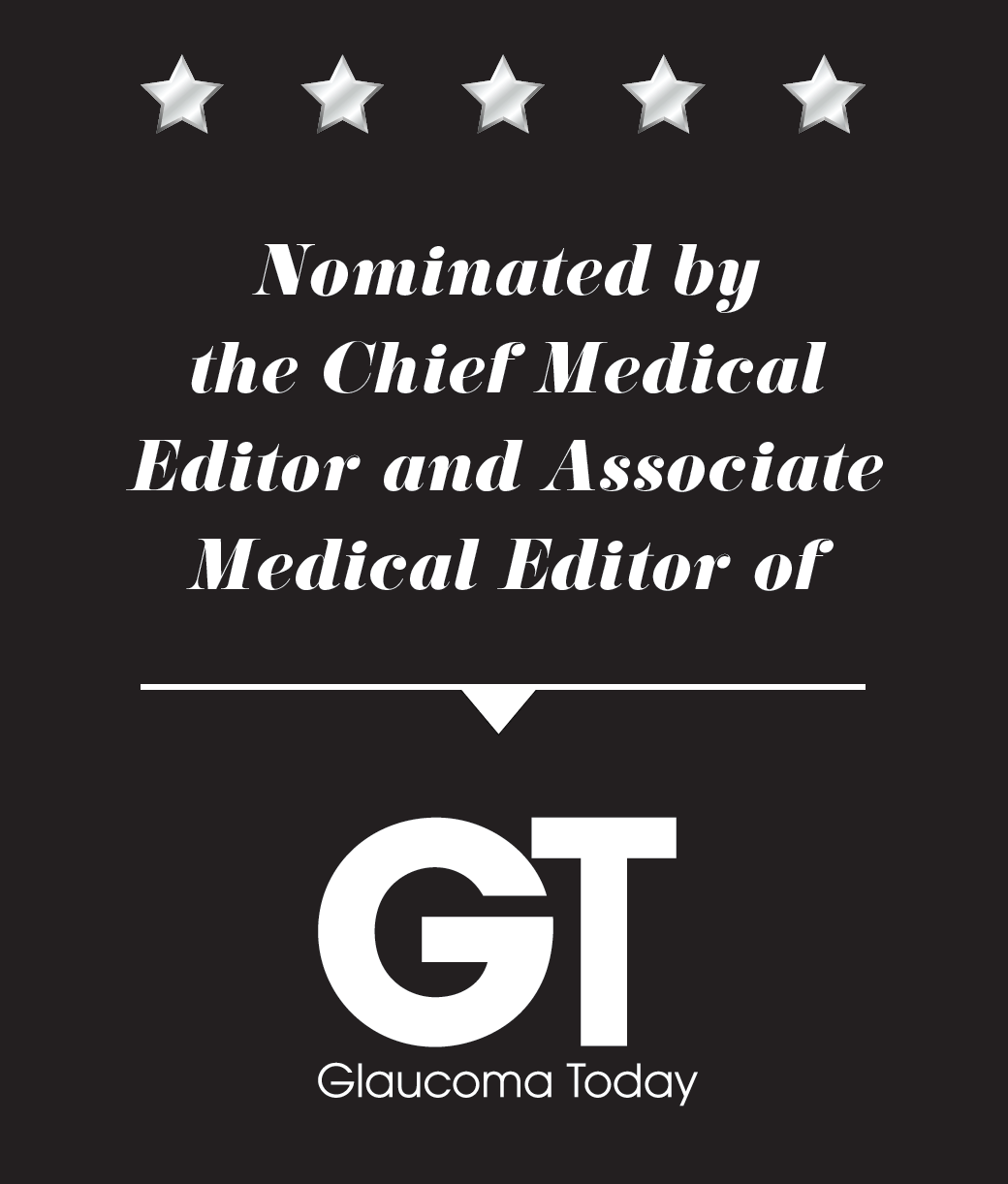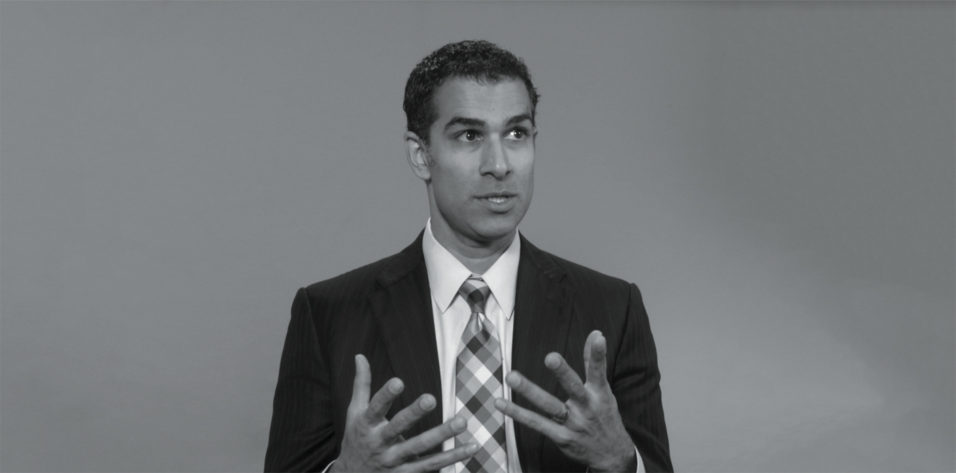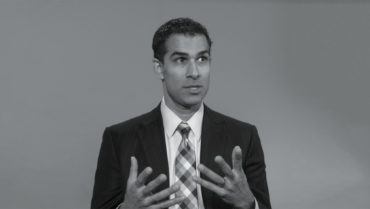Dr. Grover practices at the Glaucoma Associates of Texas, where he specializes in complex glaucoma and cataract surgery and leads the clinical research team. In this interview, he shares his passion for international health, comments on the ups and downs of developing a new surgical technique, and describes the key influencers in his life and career.
Interviewed by Callan Navitsky, Glaucoma Today and MillennialEYE Editor-in-Chief

BMC: Who or what drew you to ophthalmology?
Davinder S. Grover, MD, MPH: I have always been passionate about international health and international health policy. I actually thought I would become a consultant for the World Bank. Between my third and fourth year of medical school, I earned a master’s degree in public health. During that time, I spent a month studying health care in southern India. During one of my rotations, I visited one of the largest eye care delivery systems in the world, the Aravind Eye Hospital. I saw the kind of work being done there and the cost-effective way in which care was provided. I also witnessed the impact of blindness in developing countries.
In the United States, a blind individual has access to talking crosswalks and guide dogs. In a small village in a developing country, a 50-year-old patient who is blind from cataracts cannot be a productive member of society. In these areas, there are no service dogs to help guide the blind. Instead, the son or grandson of a blind patriarch will lead him or her around with a stick. One cost-effective surgery that takes 5 to 10 minutes could give two people their lives back—the 50-year-old could return to being a productive member of society and the boy could reclaim his childhood. Seeing an entire health care system in full flux left a mark on me, and it helped me realize the effects of blindness globally and recognize that interventions such as cataract surgery are a great way to have a lasting impact.
BMC: After earning your master’s degree, what was the rest of your training like?
Grover: After finishing my public health degree, I returned to medical school at Johns Hopkins University and was lucky that my next rotation was in ophthalmology. Although I had done my research and was set on specializing in internal medicine, on Monday of that weeklong ophthalmology rotation, I remember thinking, “Wow, this is pretty cool.” On Tuesday, I was like, “Wow, this is really cool.” By Wednesday, I was in a panic, thinking, “I need to do this.”
At 11:30 that night, I emailed the medical student director, Susan Bressler, MD. I introduced myself and said, “I just got back from public health school. I’m on ophthalmology rotation right now, and I really think I want to be in ophthalmology.” A few minutes later, she emailed me and said, “Tomorrow, all of the medical students applying to ophthalmology are getting together to talk. You should join us.” I showed up to the meeting, where I knew no one and all the other med students knew one another. We were all obviously nervous about matching in such a competitive field. Sensing this, Dr. Bressler said, “I want you to know, you’re all going to be ophthalmologists. It will all work out. If you think you’re nervous, imagine how this guy feels [pointing at me]: He just decided last night that he wants to go into ophthalmology.”
From that point on, I basically turned my whole fourth year on its head and changed all my rotations. I knocked on the doors of David Friedman, MD, and Nathan Congdon, MD, both of whom were active in international health and glaucoma. Luckily, they welcomed me with open arms, offered me invaluable advice, and helped me get involved in research. One day, Dr. Friedman said, “In 3 or 4 weeks, I’m going to Singapore. Why don’t you come?” A few weeks later, I was in Singapore with Dr. Friedman. He and Dr. Congdon really took me under their wings, encouraged me, supported me, and helped me get to where I am today.
BMC: How did you know glaucoma was the right fit for you?
Grover: Glaucoma is kind of like the internal medicine of ophthalmology because it is a chronic disease. It was also the first subspecialty I was exposed to in medical school, through Drs. Friedman and Congdon. Our glaucoma department had a focus on international health, so it was right up my alley. However, I went into residency thinking I needed to force myself not to do glaucoma. I felt like I didn’t know anything about ophthalmology outside of glaucoma, and it felt silly to go in decided on one specific field. So, I considered all other subspecialties.
Eventually, I narrowed my choices down to retina and glaucoma. Looking for guidance, I met with one of my mentors, Morton Goldberg, MD, who was the former chair at the Wilmer Eye Institute and a retina specialist. I told him that I liked both fields but felt that retina had come a long way with bevacizumab and vitrectomy (this was 2008). I explained that I felt like glaucoma surgeries were very outdated and that there hadn’t been any big advances in surgical glaucoma that had revolutionized the subspecialty like phacoemulsification or vitrectomy had done for other subspecialties. Dr. Goldberg said, “You know, I think you’d do well in either field, but it seems like your passion would be best served in glaucoma. That’s where you need to go.” Despite being a retina specialist and having a vested interest in me going into retina, he helped confirm my conviction that glaucoma was my calling.
BMC: You’ve been instrumental in the development of the gonioscopy-assisted transluminal trabeculectomy (GATT) procedure. Can you take us back to the beginning and tell us how the idea for this technique came about?
Grover: When I joined the Glaucoma Associates of Texas, my senior partner, Ronald L. Fellman, MD, and I immediately clicked. Ron and I are both geeks, and we feed off each other. From my first day, we would stay in clinic from 5 to 7 pm to read and talk about glaucoma, and it helped create this amazing synergy. Ron is a great thinker and has done so much for the field.
One day, Ron had a patient who had a failed »Trabectome (NeoMedix) surgery, and he was examining the patient with a gonioprism. He was staring at the nasal angle where the trabectome had been done, and he said, “I wonder if I can feed the suture in there.” That was a totally revolutionary idea, but he hadn’t communicated it to all of us yet. He then went to the OR and tried it with a 6-0 prolene suture because that is what was used for the ab externo trabeculotomy. However, he couldn’t get it to work.
Eventually, he came to us and explained what he had tried to do. I remember saying, “Ron, that’s amazing. That’s insane. We’re going to make this happen.” So, he and I sat down and planned out every step on paper. We thought about his approach, what he did right, and what we could do to make it work. He concluded that the 6-0 prolene probably wasn’t strong enough, so we decided to try a catheter instead. We also took the time to find the right candidate, who turned out to be a 21-year-old man who had immigrated from Afghanistan and was being seen in a free clinic. His eyelashes had grown long from all the medication, and his eyes were beet red. His pressures were around 37 mm Hg in both eyes—he needed a circumferential trabeculotomy.
We called iScience and asked if they could donate a catheter, which they did. We told the patient he needed a 360° trabeculotomy and we could do it externally, which would take up to 90 minutes and involve a big flap and conjunctival dissection. Or, we explained, we could try to do the procedure through two 1-mm paracenteses in the cornea. We were open with him and communicated that, although we felt GATT was both safe and effective, if it did not work, we would need to use an external approach. He agreed to undergo GATT.
After planning out every step, I performed GATT on the patient’s first eye with Ron assisting. Fortuitously, the procedure went exactly how we thought it should. I looked at Ron, he looked at me, my heart was racing, and we gave each other a sterile fist bump. Then, the patient said, “Did you guys get it?” He was right there with us, included in the whole process. Two months later, we performed GATT on his second eye. The patient is now 7 years out and on no medication. His eyes look perfectly normal, and his pressures are around 11 mm Hg. Those were the first two GATT procedures ever performed.
BMC: What has it been like educating other surgeons about the technique?
Grover: When we first performed GATT, we were amazed by it. However, we knew we needed to figure out all of the nuances before educating others. Ron and I performed the first 30 or 40 cases together, and then he and I taught our partners, David Godfrey, MD, and Tosin Smith, MD. For the first 30 cases that each partner performed, we did them all together to help each other troubleshoot and fine-tune the subtleties of the surgery.
In 2011, I submitted an abstract to the American Glaucoma Society describing our first 80 cases—and it was rejected. The reviewers simply didn’t know what GATT was. This experience was frustrating; we felt like the technique was revolutionary yet misunderstood due to the new terminology. It wasn’t until 5 years later, when our paper was published,1 that people started to understand. In hindsight, I’m glad we went about educating our colleagues in this way, by being honest and open, critically analyzing our data, and presenting it in the way we thought was best.
Overall, this experience made me realize how much physicians depend on industry. After residency and fellowship, many ophthalmologists receive information on new techniques, devices, and medications directly from industry or through industry-sponsored activities. We learn about a product when a sales rep comes to the office and introduces it to us. We have gotten lazy in that we often expect to be spoon-fed this information. Part of the reason new microinvasive glaucoma surgery devices are spreading so rapidly is because there is industry support for education, for company representatives to come through, and for formal surgical training.
With GATT, it took 5 years to disseminate our message because nobody was knocking on doctors’ doors saying, “This is the approach; this is what you need to do.” It wasn’t until 2017 that a course on GATT was accepted by the AAO. However, we always did our best to educate anyone who wanted to learn, and to this day I have an open-door policy for any ophthalmologist who wants to come to my OR. Today, GATT, a term coined by Dr. Fellman, has become more common lingo. That’s pretty damn cool. It’s beyond anything that I thought in my wildest dreams I’d ever be involved in, let alone in the first couple years of my career.
BMC: What is it like educating patients about the procedure?
Grover: GATT has been easier to explain than other approaches because, as I tell patients, it is a modification of a surgery (circumferential trabeculotomy) that has been around for 60 years. I explain that it is analogous to an open versus a laparoscopic appendectomy. I inform patients that GATT is quicker and less invasive than ab externo trabeculotomy, but it will accomplish the same outcomes in a safer way.
BMC: What’s next for GATT and for other glaucoma innovations?
Grover: I’m most excited about the cost-effective nature of GATT. This technique can be performed all over the world for just $2 or $3, and my dream is for it to have worldwide implications. When you visit other countries as “the American doctor,” there is always a healthy level of skepticism. Local ophthalmologists will say, “It works for your patients, but not for our patients.” We will have to show—and prove—that GATT can be used everywhere. I have traveled to Saudi Arabia and India to perform GATT, and patients there have done very well. My partner, Oluwatosin “Tosin” Smith, MD, has performed and taught GATT in Nigeria, Kenya, and Nepal through the Cure Glaucoma Foundation. I think the next chapter in GATT is worldwide training. It certainly would be great to have a prospective trial in the United States and a prospective international trial.
In reality, I imagine that the future of innovation in the United States in glaucoma is still going to be in disposable devices, given the potential for profit and industry sponsorships. I think we have made the most of the trabecular outflow pathways, be it with »iStent (Glaukos), »Hydrus (Ivantis), the »Kahook Dual Blade (New World Medical), Trabectome, or GATT. The next frontier will likely be understanding the suprachoroidal space and wound healing in that space. We will also probably explore why trabecular outflow pathways or angle surgeries fail, what happens postoperatively with wound healing, and how we can change that wound healing. At least, that is where I hope the next stage of innovation goes in glaucoma.
BMC: If you weren’t an ophthalmologist, which profession would you pursue?
Grover: I always thought I would be a nonpracticing cardiologist working for the World Bank and focusing on the double burden of disease in developing countries. The major causes of death in the world are the infectious diseases tuberculosis, malaria, and HIV. However, thanks to fast food and the Western diet, more people in developing countries who used to die from starvation and infections are now dying from obesity and obesity-related diseases such as high blood pressure, diabetes, hypocholesterolemia, heart attack, and heart disease. That is the double burden of disease and what I was most interested in exploring, not through practicing medicine but by consulting on an international level.
BMC: If you had to nominate one person to be a creative mind, whom would it be and why?
Grover: Can I give two? If so, the first would be the late Francisco Fantes, MD. Dr. Fantes was a glaucoma and cornea specialist at Bascom Palmer Eye Institute, one of my most favorite people, one of my closest mentors, and an innovator himself. Dr. Fantes was one of the first surgeons to use a corneal patch graft over a glaucoma drainage tube and one of the creative minds behind the »InnFocus MicroShunt.
Dr. Fantes always encouraged me to think outside the box. I would frequently go to him with questions. For instance, after a drainage tube is placed in the eye, sometimes the tube is too close to the cornea. To fix this, we usually have to take the patient back to the OR, pull the tube out of the eye, and redirect it. I once asked Dr. Fantes, “Why can’t we use an argon laser to melt and bend the tube?” Dr. Fantes looked at me and said, “It won’t work. The tube won’t take up the energy from argon.” I was like, “Are you sure? How do you know?” He smiled, opened his drawer, cut a piece of tubing, and handed it to me. Instead of simply telling me why, he encouraged me to find out for myself and to seek out the answers to my questions. Dr. Fantes also assisted me in developing several instruments, including a spatula for bleb revision and a double muscle hook. He was always happy to see someone think differently.
The second person I would nominate is Dr. Fellman, my senior partner. He has been practicing for more than 35 years and is still asking questions, still learning, still unafraid to fail, and still curious. In the beginning of his career, he was involved with John Lynn, MD, and they performed the first external trabeculotomy under a flap in the United States. Then, together we did the first ab interno circumferential trabeculotomy (GATT) in the world. He is the creative genius behind GATT. In his career, Dr. Fellman has been integral in both aspects of these techniques and he also coined the term canaloplasty. He has a gift for words, an unparalleled level of enthusiasm for creation, and a relentless intellectual curiosity.
1. Grover DS, Godfrey DG, Smith O, Feuer WJ, Montes de Oca I, Fellman RL. Gonioscopy-assisted transluminal trabeculotomy, ab interno trabeculotomy: technique report and preliminary results. Ophthalmology. 2014;121(4):855-861.




